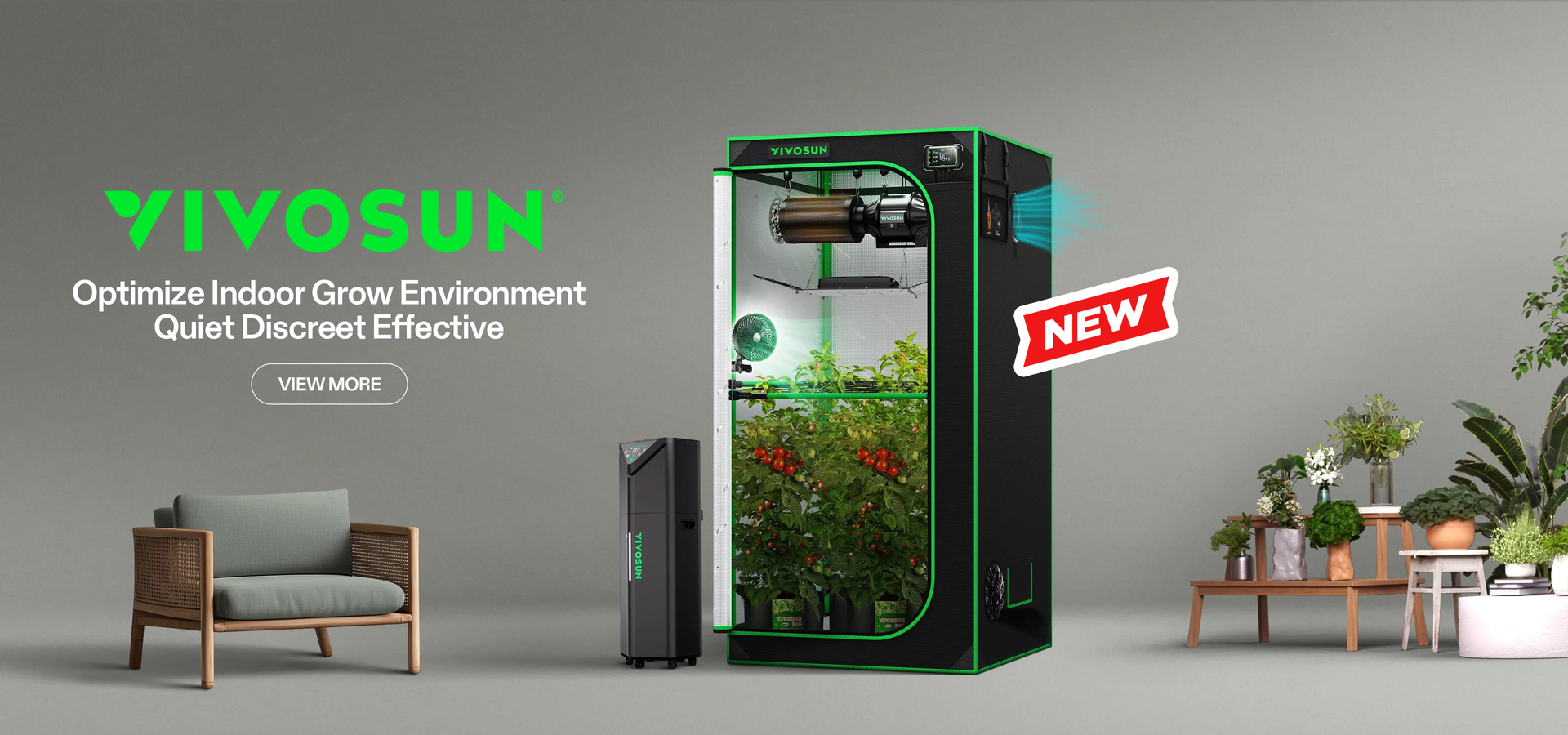Air Movement
The Science that will Go with the Flow
Proper air movement is critical for a successful hydroponic grow room. It affects plant health, disease prevention, CO₂ availability, temperature control, and humidity levels.
Here's how to set up air movement the right way...
1. Understand Why Air Movement Matters
- Prevents mould/mildew: Stops stagnant, humid air.
- Strengthens stems: Mimics outdoor breeze, promotes stronger plant structure.
- Even temperature & humidity: Distributes heat from grow lights and keeps humidity uniform.
- Improves CO₂ uptake... Fresh air = better photosynthesis.
2. Equipment You’ll Need
Oscillating Fans
This will create constant gentle air movement across plants. The best placement for the fans is...
:
- 1–2 fans at canopy level, oscillating back and forth.
- Angle slightly downward but never blowing directly on plants at high speed.
Exhaust Fan (Inline Fan)
- Purpose: Pull stale, humid, or hot air out of the grow room.
- Size: Depends on grow room volume (see CFM calculation below).
- Placement: High on the wall or ceiling (because heat rises).
Intake Fan or Passive Intake
- Purpose: Bring fresh air into the room.
- Passive intake: Just an open vent (relies on negative pressure from the exhaust).
- Active intake: Small fan pulling air in (ideal if passive isn’t sufficient).
Environmental Controllers (optional but ideal)
- Temp & humidity controller to turn fans on/off based on set levels.
- Can also control humidifiers/dehumidifiers and heaters.
3. Calculate Fan Size (CFM)
CFM = Cubic Feet per Minute — how much air your fan can move. The formula is below:
- Room volume (ft³) = Length × Width × Height
- CFM needed = Room volume × Air exchange rate (typically 1 every 1–3 minutes)
An example is below...
- Room size: 10' x 8' x 7' = 560 ft³
- Desired exchange every 2 minutes: 560 ÷ 2 = 280 CFM
For this scenario, choose an exhaust fan rated at least 280 CFM (add 10–20% buffer if using carbon filters or ducting).
4. Control Temperature & Humidity
- Temp Range: 70–80°F (21–27°C) lights on, 65–75°F (18–24°C) lights off
- Humidity (RH):
- Seedlings: 65–70%
- Veg: 50–70%
- Flowering: 40–50% (lower to prevent mould)
Optional Tools...
- Humidifier/Dehumidifier (based on your climate)
- AC or Heater for temp control
- CO₂ supplement (optional, if you're sealing the room)
5. Set Up Ideal Air Flow Pattern
[Passive/Intake Vent] ---> [Canopy + Oscillating Fans] ---> [Exhaust Fan]
- Fresh air enters low (intake)
- Moves across plants with help of oscillating fans
- Exits high via exhaust fan
- Creates a clean airflow loop
6. Monitor and Adjust
Use digital thermometer/hygrometer combos placed at:
- Canopy level (main concern)
- Room corners or near air vents (check for dead spots)
Common Mistakes to Avoid
❌ No air circulation: Leads to hot/humid pockets = mold & weak plants.
❌ Too strong airflow: Can wind-burn leaves and stress plants.
❌ No exhaust: Just recirculating hot, stale air.
Would you like any further knowledge or advice on this? If so then please feel free to give us a call or visit us in store!


